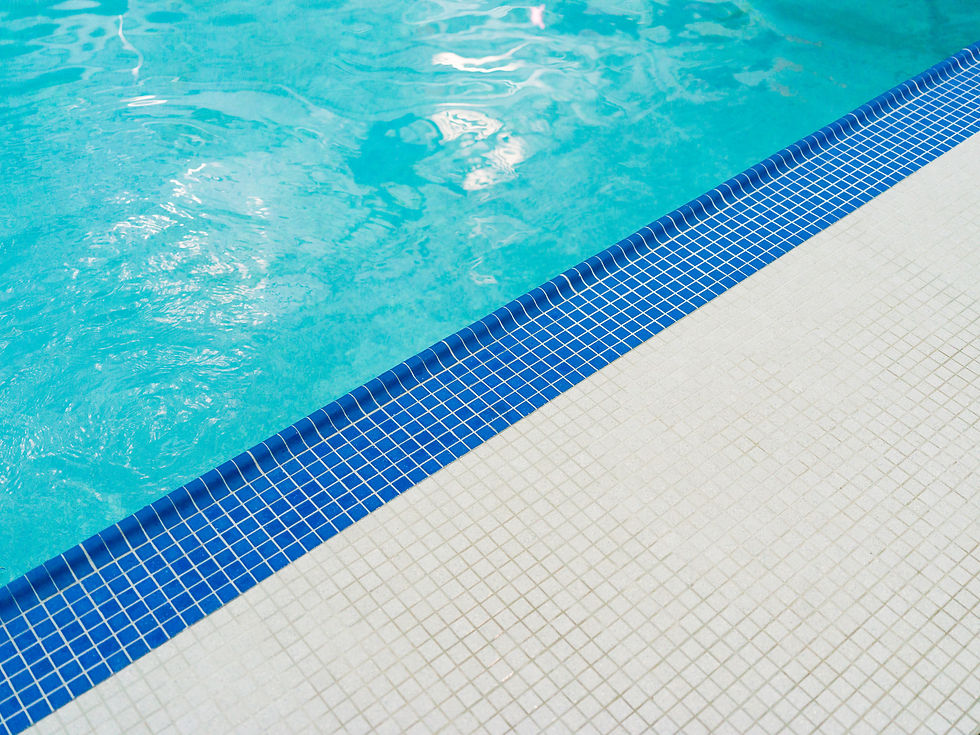Summer Fun Amidst Covid-19 Closures
- Russell Aquatics Swim School

- Jun 16, 2023
- 3 min read

As the weather gets warmer, families begin opening backyard pools, visiting beaches and trying to find ways to keep cool. This year, things are a little different. While the weather is getting warmer and pools are opening as usual, many parents are working from home and kids are out of school a bit earlier than planned. Waterfronts, where lifeguards would usually be present, are now unsupervised. Childcare options are limited. And children are being left unattended with distracted awareness for adjacent bodies of water such as:
backyard pools
neighbours’ pools
hot tubs
inflatable pools
sinks, toilets and filled bathtubs
buckets
ditches filled with rainwater
oceans, lakes, and rivers
The spring swim session is among one of our busiest seasons, with families gearing up for pool parties, visits to the beach and splash pad and overall, more exposure to water.
Participation in formal swimming lessons can decrease the risk of drowning by up to 88% for children aged 1-4.
During mandated closures, families have not had the opportunity to attend lessons, which effectively increases their risk of drowning. It’s something that the aquatic community is growing more and more concerned about.
We’ve put together a list of water safety tips to help you and your family stay out of harm’s way while keeping cool:
Designate a Water Watcher – Even when you’re not swimming
During this time, it is especially important to understand that a water watcher isn’t just a role that is taken on at the beach or when your child is in their swimsuit, ready to jump in.
If possible, your child should have undistracted eyes on them at all times when they’re on the move – especially if you or a neighbour have a backyard pool, hot tub or you live near a pond or creek. Water watching means that you are free of distractions, including cell phones, computers, books and television and giving your child your undivided attention. A good way to do this and balance work is to schedule activities with your child like bike rides, outdoor games or other physical activities where you can feel good they’re getting exercise and then set them up with a stationary activity like school work, an activity book or a craft later, knowing that they are within your sight.
Ensure that Safety Measures are in Place
In Ontario, it is required that all backyard pools be surrounded by an enclosed fence. This is because a latching fence can significantly reduce the risk of accidental drowning. Even if you don’t have children of your own, it is your responsibility as a pool owner to ensure that you are doing your part to keep your community safe. Beyond pool fences, ensure that your child cannot easily leave your home without you noticing. Installing additional security locks at a higher level or setting your security system to chime when a door is opened is a good way to ensure that your child isn’t leaving your home unannounced.
You can also install contact sensors and pool alarms such as:
surface wave sensors
sub-surface alarms
wristband sensors (especially great for children with special abilities or even seniors with dementia or alzheimers).
Do not assume that a pool cover will protect your child from drowning. And do not assume that your child will know not to venture out onto the surface. When at the pool or beach, ensure that a working phone is nearby in the event that you need to call for help. Don’t take your children swimming if you are not a strong enough swimmer to be able to help them if they end up in the deep end.
Remove Enticements
Children are naturally drawn to things that are colourful and fun like rubber ducks, pool noodles, buckets and more. Ensure that when getting out after a swim, you remove all pool toys and any other enticements. These objects might encourage your child to enter the pool without supervision or reach a little farther than they should. After bath time, ensure that the water is fully drained and toys are tidied up. Be conscious of sitting water such as pails for car washing, floor cleaning, emergency buckets for fire pits. Even if you turn your back for a few minutes to answer the phone, your child might see an opportunity to play with bubbles. After rainfalls, be aware of large puddles, flooded areas and ditches that can be filled with rainwater. Jumping in puddles can be a fun activity, but it can be difficult to tell the water depth.
Educate
The most important way to ensure water safety is through education.
While swimming lessons are an integral part of this, you can teach your child that water can be dangerous. Teach them:
about the importance of staying away from water when nobody else is around
the importance of learning to swim
how to be safe.



